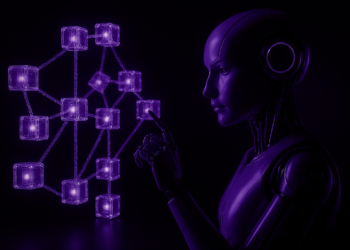Let’s say you want to get into the sports business and start your own gym. What do you need to make this ambition a reality? Premises, of course, and kit and equipment. You’ll also need to think about a programme of courses, teachers to teach them, an app to book them, and a website and social networks to share them with the world. Once you have put all this together, the chances are you’re ready to start your business.
But what happens when a global pandemic hits? How do you develop new products when a virus leaves you no choice but to close your studio? These are some of many questions that the teams at Equinox Media, the Equinox fitness group marketing department had to ask themselves. While they quickly abandoned a communication strategy dependent on face-to-face contact and opted for a purely online marketing plan, the transition was more complicated in terms of content production. Hence the importance of bringing their CMS platform into the ‘new normal’ as well.
But before setting off on an expedition into this future world, which is the subject of our second article, let’s dwell for a moment in the past. The opportunity for us to look back with our partner Contentful on what constituted the glory days and the fall of the previous generation CMS.
1. HTML, or the origin of the CMS world
However, let’s not rewind the footage too quickly! Are we sure we know exactly what the acronym CMS encompasses? Old or new generation, Content Management Systems aim to facilitate the creation, editing, publication and dissemination of information on websites, blogs and Internet portals. In short, summarises Olivier Berckmans, Regional Partner Manager at Contentful, “a CMS provides the framework that content publishers will then only have to dress up with the help of texts, images, videos, contents”.
Definition: “A CMS provides the framework that content publishers will then only have to dress up with the help of texts, images, videos, content”.
So it won’t surprise anyone that the history of CMS dates back to the earliest days of the Internet. Who invented it? Tim Berners-Lee, to whom we owe the creation, at the dawn of the 1990s, of the first website in the history of humanity. It was modelled on a hypertext system based on the Internet and HTML, which represented only text and links.
Fast forward to the mid and then late 90s. While use of the Internet is no longer the prerogative of a handful of enlightened geeks, websites require more and more frequent updates. This encourages, observes Olivier, “the introduction of a plethora of CMS”. And also heralds the appearance of their first setbacks.
2. Once upon a time there were CMS
Indeed, explains our expert, “at the beginning of 2000s monolithic approaches reigned which, in terms of web applications, made it possible to do as many things as possible with a single solution”.
- Their strong point? Allowing companies to design websites that are quite suitable and “largely satisfactory for communicating to the outside world”.
- Their weak point? Their planned obsolescence. “These all-in-one solutions observes Olivier, have, in fact, experienced a delayed year 2000 bug”. At the dawn of the 2010s, business marketing strategies could no longer be reduced to producing content for static websites. So it was Goodbye to monolithic approaches.
Another difficulty? The need to open up content management to a wider audience. In a world that is going digital at breakneck speed, content cannot be left to specialised web admins alone. Everyone in the company should be able to contribute to website production at their own scale and level. This includes the business teams in charge, for example, of updating the online product catalogue. “This technical aspect, remembers Olivier, turned out to be very limiting, even a risk factor, so much so that companies started looking for ways to connect their traditional content management system to much more specialised applications”.
The observation: In a world that is going digital at breakneck speed, content cannot be left to specialised web admins alone.
3. The obsolescence of older generation CMS
For solution publishers, adapting to change was painful. What challenges did they face? New contacts with skills, demands and requirements very different from those they were used to.
- They have, therefore, had to adjust their technical support offer to reflect the diversification not only of users but also of delivery channels. “The appearance of the mobile channel, confirms our expert, has reshuffled the pack as historical solutions have encountered difficulties in managing this multi-channel approach.”
- Difficulties that have multiplied with the deployment of apps, interactive terminals and the Internet of Things with the evolution of programming techniques. “When you are on a proprietary technology, comments Olivier, you are free to impose development technologies on a client who would like to extend your tools and your applications”. The challenge? “Finding developers interested in languages which, while they were once in vogue, are no longer popular at all”. Of course, every problem has its solution: developers, even very expensive ones, have been recruited, integration programmes, even very complex ones, have been designed.
The expert viewpoint: “With a traditional CMS, the single point of failure was within the companies themselves”.
- But none of these answers could make us forget that “with a traditional CMS, the single point of failure was within the companies themselves”. These historic content management solutions had, understandably, begun to be deployed in-house. The companies hosted all the infrastructure on their own premises, which represented an additional cost in terms of maintenance but not only that. “Companies were not adequately equipped to protect themselves from hacking or other unforeseen situations, and therefore risked losing their data”. An even higher price to pay as this data can now be transferred to the cloud…
Within companies, these difficulties with tools, integration, multi-channel management and security also affected relations between the various departments. Above all, they were a factor in the emergence of SaaS solutions which were, as we will see in a second article (LINK), the origin of a major revolution in the world of CMS … Story to be continued!












